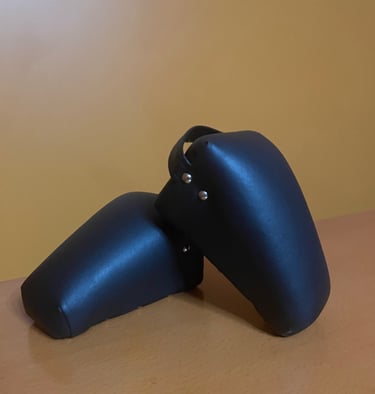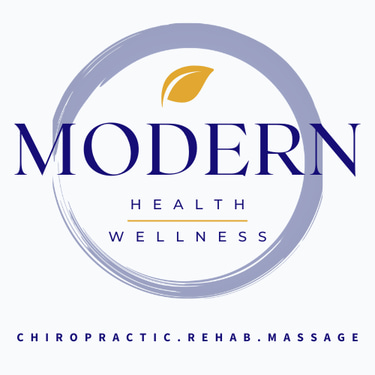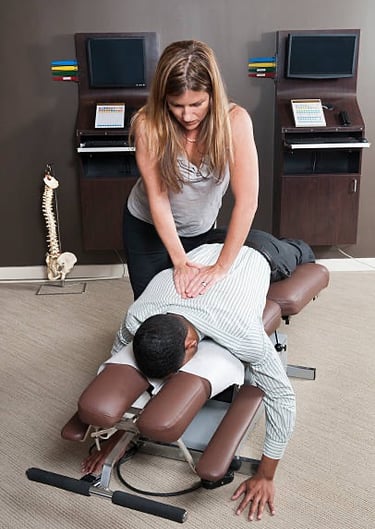


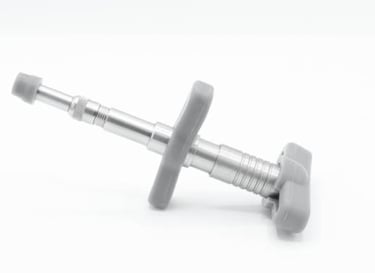

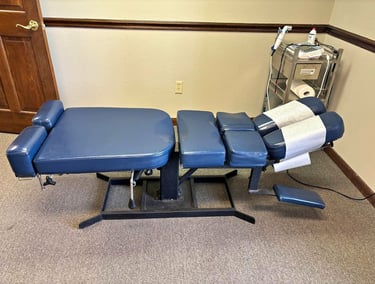


Activator- gentle adjustment using a small handheld device
Toggle Board- a small adjusting table specifically useful for adjusting the extremities.
Personalized care plans address your specific health concerns and goals to help you live a pain-free and active lifestyle.




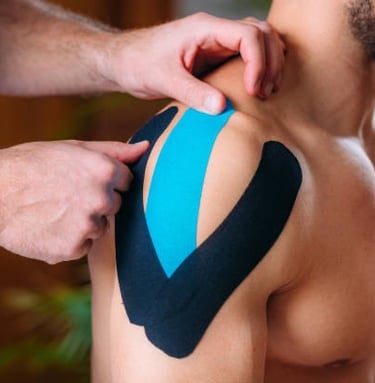

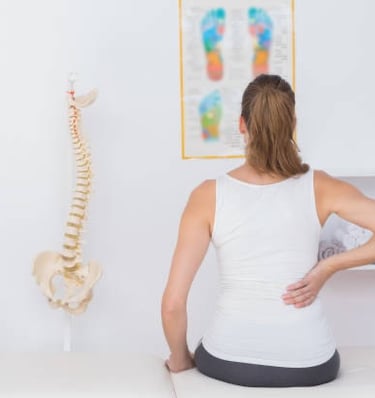


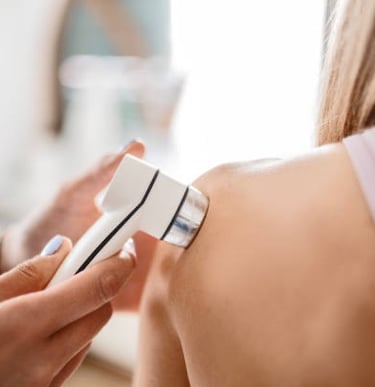
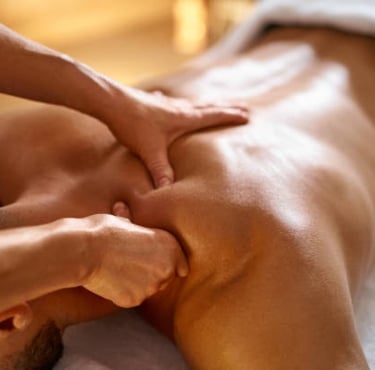

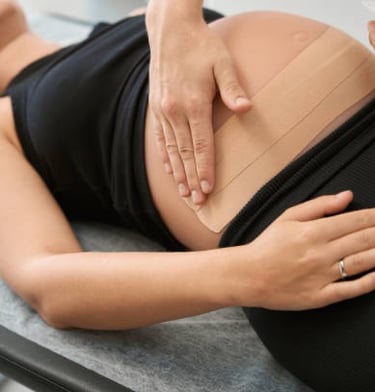



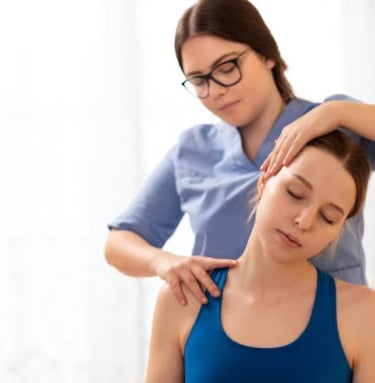


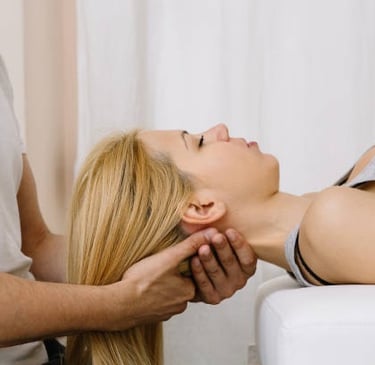
Therapeutic
Neuromuscular
Manual Traction
Massage
Myofascial Release
Trigger Point
Electrical Stimulation
Therapeutic Ultrasound
Moist Heat/
Kinesiotaping
Foot Orthotics
Pelvic Blocking
Nutritional Counseling
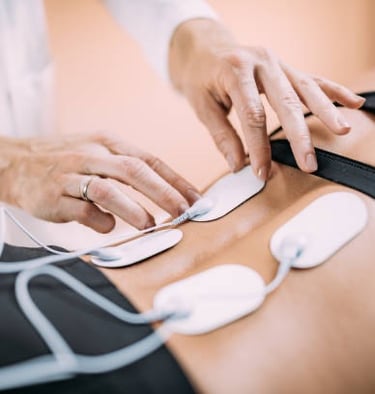

Pregnancy Care
Neuromuscular re-education is a technique used to help retrain and restore proper muscle function. This approach focuses on improving coordination, strength, and flexibility in order to address any impairments in the nervous system that may be affecting muscle movement. Neuromuscular re-education can be beneficial for those recovering from injuries, surgeries, or neurological conditions that have impacted their muscle function.
Therapeutic exercise is used to improve strength, flexibility, and mobility in individuals who have physical limitations or injuries. It involves a personalized program of specific movements and activities that are designed to target areas of weakness or dysfunction. Therapeutic exercise can also help in preventing future injuries and promoting overall health and well-being. Whether recovering from a sports injury, surgery, or chronic condition, therapeutic exercise can be a valuable part of a rehabilitation plan.
The kinesiotaping method is a widely used technique to support and promote healing in the body. By applying a special adhesive tape to the skin, this method helps to provide stability to muscles and joints, reduce inflammation, and support proper movement patterns. The tape is designed to mimic the skin's elasticity, allowing for a full range of motion while still providing support and reducing discomfort. This approach is often used in the recovery process from injuries, as well as to manage pain and improve overall function.
Manual traction is used to relieve pressure on the spine and alleviate pain. This technique is often employed by chiropractors to treat conditions such as herniated discs, sciatica, and degenerative disc disease. By gently stretching the spine, manual traction can help to create space between the vertebrae, reduce nerve compression, and improve overall mobility and function. This non-invasive approach to treatment can provide effective relief for those experiencing chronic back and neck pain. It is important for the therapist to apply the correct amount of force and to monitor the patient's response to ensure that the treatment is both safe and beneficial.
Trigger point therapy is a technique used to release areas of tight muscle fibers. These tight areas, also known as trigger points, can cause pain and discomfort to radiate to other parts of the body. By applying pressure to these specific points, the tension and pain are relieved and overall muscle function is improved. Trigger point therapy can be effective for treating muscle pain, stiffness, and even some types of chronic pain conditions.
Massage is an effective way to alleviate tension and pain in the body. By applying targeted pressure and manipulation to the muscles and soft tissues, massage can help to reduce discomfort. Whether it's a deep tissue massage to target specific areas of pain, or a gentle Swedish massage to promote relaxation and stress relief, the benefits of massage are numerous. In addition to physical benefits, such as improved circulation and flexibility, massage can also have a positive impact on mental well-being, helping to reduce anxiety and promote overall relaxation.
Therapeutic ultrasound is used to treat various musculoskeletal conditions such as muscle strains, ligament sprains, and joint inflammation. This non-invasive treatment uses high-frequency sound waves to penetrate deep into the tissue, promoting healing and reducing pain and inflammation. The ultrasound waves generate heat and increase blood flow to the targeted area, which can help to speed up the body's natural healing process. It is a popular treatment option for athletes and individuals with chronic pain or injuries, as it can help to improve mobility and reduce discomfort.
Electrical stimulation is a therapeutic technique that delivers low-level electrical currents to muscles and nerves in order to promote healing and pain relief. This non-invasive treatment can be used to enhance muscle strength, improve circulation, and reduce inflammation. By stimulating the nerves and muscles, electrical stimulation can help to relieve chronic pain and muscle spasms, as well as improve range of motion and mobility. This treatment is commonly used to aid in rehabilitation after injury or surgery.
Foot orthotics are used to help provide support and alleviate pain in the feet, ankles, lower limbs, and even the low back. These custom-made inserts are designed to correct issues with foot alignment, improve posture, and reduce strain on the muscles and joints. Whether you suffer from plantar fasciitis, flat feet, or other foot-related conditions, orthotics can make a significant difference in your overall comfort and mobility. By providing cushioning and stability, they can also prevent injuries and improve performance during physical activities.
Pregnancy care is aimed at supporting the body through the changes of pregnancy. Chiropractic care can help alleviate discomfort, improve mobility, and promote overall wellness for pregnant women. By focusing on the alignment of the spine and pelvis, chiropractors can help reduce pain in the back, hips, and pelvis, as well as address issues like sciatica or round ligament pain. Additionally, chiropractic adjustments can aid in optimizing the position of the baby for delivery. This gentle and non-invasive form of care can provide expecting mothers with relief and support throughout their pregnancy journey.
Moist heat and cryotherapy are common treatments used in chiropractic care to help reduce pain and inflammation in muscles. Moist heat can help to relax tight muscles and increase blood flow to the affected area, promoting healing and reducing discomfort. Cryotherapy, on the other hand, involves the application of cold packs or ice to reduce swelling and numb the pain in the muscles. Both of these therapies can be effective in providing relief for patients suffering from muscle pain and inflammation, allowing them to experience improved mobility and overall comfort.
Ergonomic Counseling
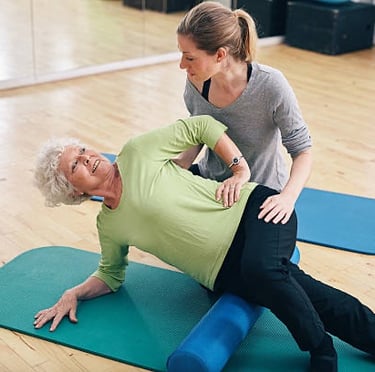

Myofascial release is used to restore the natural movement and flexibility of the body's fascia. Fascia is the connective tissue that surrounds and supports muscles and organs. Myofascial release can help improve mobility, reduce pain, and enhance overall physical performance. It is often used to treat conditions such as chronic pain, sports injuries, and postural imbalances. Myofascial release is performed by trained professionals. Patients can be trained in self-myofascial release techniques using tools such as foam rollers or massage balls, to obtain further benefit and maintain gains.




Nutritional counseling is a valuable tool to assist individuals in enhancing their overall health and well-being. Through personalized guidance and support, patients can make positive changes to their diet and lifestyle to achieve their health goals. Additionally, the recommendations of vitamins and supplements can further optimize health and address any nutritional deficiencies. Whether it's managing weight, improving energy levels, or addressing specific health concerns, nutritional counseling can provide individuals with the knowledge and resources needed to make lasting improvements to their health.
Ergonomic counseling aims to educate individuals about the detrimental effects of poor posture and positioning on their overall health and well-being. By providing guidance and recommendations, patients can learn how to improve their posture and reduce the risk of pain and discomfort. This type of counseling also helps individuals recognize the importance of proper ergonomics in their daily activities, such as sitting at a desk or lifting heavy objects. Through increased awareness and practical strategies, patients can make significant changes to their posture and ultimately prevent or alleviate any associated health issues. Ergonomic counseling plays a vital role in promoting a healthier and more comfortable lifestyle for individuals of all ages.
Pelvic blocking is a technique used to address leg length discrepancies and correct imbalances in the pelvis that can have a cascading effect on the entire spine and kinematic chain. By using specific blocks or wedges, the pelvis can be stabilized and realigned, helping to alleviate pain and improve overall biomechanics. This approach is often used in conjunction with other treatment modalities such as manual therapy, exercise, and stretching to address the underlying issues contributing to the imbalance. By addressing these pelvic issues, it is possible to reduce strain on the spine and surrounding muscles, leading to improved function and decreased discomfort.
Re-education
Therapy
Exercise
Cryotherapies
